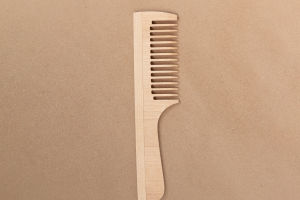The phonograph, an invention that revolutionized the world of recorded music, operates through a fascinating blend of mechanical ingenuity and acoustic science.
Developed by Thomas Edison in 1877, the phonograph was the first device capable of recording and reproducing sound.
Though the technology has evolved since its inception, the basic principles of how a phonograph makes sound have remained a cornerstone in understanding analog audio reproduction.
To fully grasp how a phonograph produces sound, it is essential to explore its key components, the process of sound recording, and the method of sound playback.
At the heart of the phonograph is its simple yet effective design, composed of several key components. The most critical parts include the turntable, stylus (or needle), tonearm, and diaphragm.
The turntable, which holds the record, rotates at a consistent speed. The stylus, a sharp, delicate needle, is attached to the tonearm and rests in the grooves of the record.
The tonearm, in turn, transfers the vibrations created by the stylus into the diaphragm, a thin membrane that transforms these vibrations into sound waves.
In addition to these mechanical components, phonographs require a soundbox or horn, which amplifies the sound produced by the diaphragm.
Early phonographs used large horns to project the sound into the air, while later versions employed electric amplification systems for a more powerful output. Together, these elements work in harmony to capture, translate, and project sound.
The process of recording sound on a phonograph is both mechanical and physical. In the early days of phonograph technology, sound was captured through a simple mechanical process.
Musicians or speakers would perform in front of a large horn, which funneled sound waves toward the diaphragm. The diaphragm would then vibrate in response to these sound waves, moving a connected stylus.
As the stylus moved, it engraved a series of grooves onto a rotating cylinder or disc made of materials like wax or shellac.
These grooves were a physical representation of the sound waves, with the depth, width, and spacing of the grooves corresponding to different frequencies and volumes of the original sound.
Louder sounds produced deeper grooves, while higher frequencies created closer, more tightly spaced patterns. Once the recording was complete, the grooves contained a detailed map of the sound, which could be replayed on the phonograph.
The magic of the phonograph truly comes alive during the playback process. To reproduce sound, the record (either a cylinder or disc) is placed on the turntable, which spins at a constant speed.
The stylus, placed in the groove of the rotating record, traces the path of the engraved sound waves.
As the stylus moves along the grooves, it vibrates in response to the bumps and ridges it encounters. These vibrations are transmitted up the tonearm to the diaphragm.
The diaphragm vibrates in response to the stylus’s movements, recreating the original sound waves captured during the recording process. These vibrations are then amplified by the horn or speaker, turning the mechanical motion of the stylus back into audible sound.
Over time, phonograph technology underwent significant advancements. Early phonographs used wax cylinders, which were later replaced by flat records made of shellac or vinyl.
Vinyl records, in particular, became the standard due to their durability and improved sound quality. Additionally, electric phonographs introduced amplification through speakers, offering a louder and clearer sound than the original acoustic models.
Despite these technological advancements, the basic principle of how a phonograph makes sound—by tracing grooves with a stylus and transforming vibrations into audible sound—remained unchanged.
This mechanical process is what distinguishes the phonograph from more modern digital devices, which store and reproduce sound through entirely different means, such as digital sampling and electronic playback.
The phonograph's ability to make sound is a testament to the ingenuity of mechanical sound reproduction.
By using a stylus to trace grooves on a record, and by converting these mechanical movements into vibrations that can be heard as sound, the phonograph created a new way for people to experience music and other audio.


